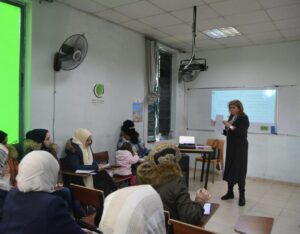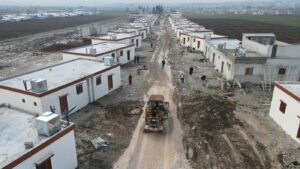Mosaic: Art, Rehabilitation, and Self-Actualization
-
by
safaa
In a world where many people face challenges due to specific disabilities, the importance of providing empowerment and rehabilitation opportunities for them to realize their potentials and contribute effectively to society becomes apparent., the Mosaic project emerges as an inspiring model that embodies the synergy between art, rehabilitation, and self-actualization.
Between 2018 and 2019, Souriyat Across Borders witnessed commendable efforts to empower persons with disabilities through the Mosaic project.
This project included an intensive six-month vocational training program consisting of 250 training hours. This training went beyond learning handicrafts and technical skills to encompass the development of personal and social capacities and the expression of latent emotions among participants.
Mr. Mohammed Bare’ Al-Khatib, the trainer overseeing this training course, spoke about the main objective behind the project: to foster a sense of pride and self-confidence among the participants. This objective aimed not only for them to achieve their economic and social goals but also to immerse themselves in a rewarding experience that helps them understand the value of the profession they pursue.
But the question arises, what is the therapeutic aspect of the art used in mosaics? Mosaic technique relies on the harmony of colors and shapes to express culture and emotions. This delicate art requires patience, attention to detail, and intense focus.
The project begins with participants envisioning the work they intend to create, followed by preparing tools and forming the image until the artistic work emerges in its entirety. Upon completion, a plethora of emotions accompanies it, such as pride, self-confidence, and overwhelming joy in producing a valuable piece crafted with love.
One of the most positive outcomes of this project is the emergence of inspiring success stories. Among the participants was Abu Mohammed “Abdulilah,” who now leads the handicrafts training team at SAB.
Through his skill development and continued creativity, he has become a role model, offering personal advice and guidance to many.
Another remarkable success story is that of the beneficiary nicknamed Abu Mariam, mentioned by the trainer, Mr. Bare’, as one of the diligent individuals. He chose to move to the United Kingdom and continues his journey with mosaics, driven by his strong determination to learn this craft from all its aspects.




